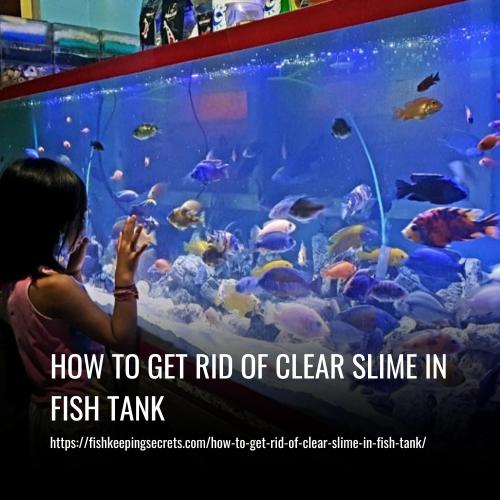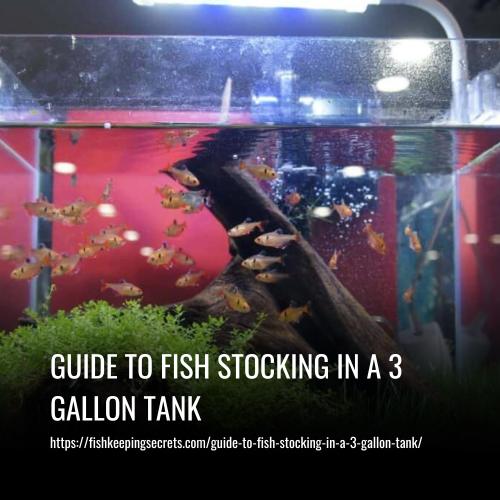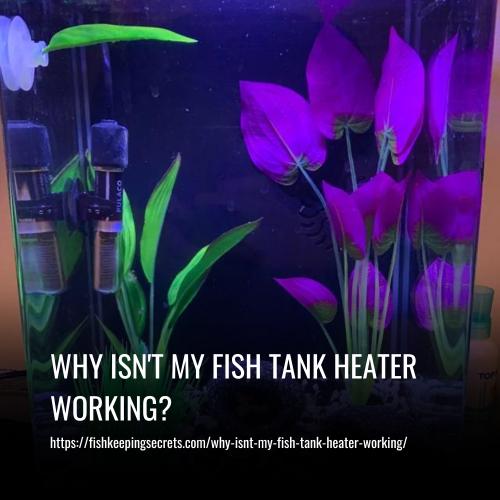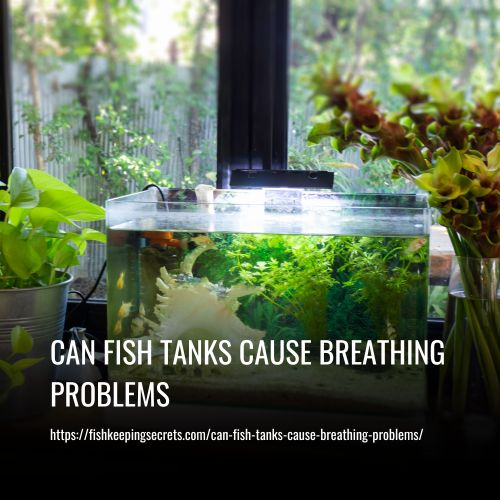How to Get Rid of Clear Slime in Fish Tank
This post contains affiliate links. As an Amazon Associate, we earn from qualifying purchases.
To get rid of clear slime in a fish tank, increase water changes and reduce feeding. Regular cleaning and maintaining proper filtration will prevent the buildup of organic waste, which can lead to slime growth.
Keeping a fish tank clean and healthy is crucial for the health and well-being of the fish. One common issue that many aquarium owners face is the buildup of clear slime on the tank’s glass, substrate, and decorations. Clear slime is a type of bacterial buildup that occurs when there is an excess of organic waste in the tank.
To Get Rid of Clear Slime in the Fish Tank, follow these Tips:
- Keep The Tank Clean.
- Avoid Overfeeding.
- Monitor Water Parameters Regularly.
- Installation Of Aeration Systems For Optimal Oxygenation.

Steps To Prevent Clear Slime Growth In Fish Tanks
You invest time and energy into constructing the perfect fish tank. But now, you notice the presence of clear slime, which makes your tank unpleasant, and the water quality might be low. Clear slime growth in fish tanks is a known phenomenon, but there are steps to actively prevent it.
Here are some crucial steps:
1. Keep The Tank Clean:
A clean tank is crucial in preventing slime growth. A dirty tank will allow both bacteria and other organisms to thrive. Below are essential tips to maintain a clean tank:
- Schedule regular water changes; 25% at least every two weeks.
- Vacuum the gravel bed.
- Eliminate all uneaten food and organic debris.
2. Avoid Overfeeding:
Overfeeding is a prime reason for clear slime growth. Feeding excess food leads to an overproduction of organic waste, which is difficult for filters to handle. Thus, the extra organic waste is the perfect breeding ground for slime and other bacteria.
- Feed the fish twice a day using only small amounts of food that can be eaten within two minutes.
- Avoid feeding in excess as this leads to an increase of debris in the water.
3. Monitor Water Parameters Regularly:
Many factors influence the quality of water in a fish tank. Monitoring the water parameters regularly leads to keeping the water in an optimal condition for the fish. The following are some tips to monitor water and maintain quality:
- Use kits to test the water quality at least once a week.
- Check the ph, ammonia, nitrite and nitrate levels.
- Ensure the temperature is within the recommended range for your specific fish.
4. Installation Of Aeration Systems For Optimal Oxygenation:
Optimal oxygenation is crucial in a fish tank. Fish, other living organisms and beneficial bacteria depend on oxygen availability. Aeration systems ensure that oxygen levels are maintained in a consistent manner.
- Install an air pump and air stone to ensure optimal oxygenation and water movement.
- The movement of water and oxygenation leads to reduced slime build-up.
By following the above steps, you can be assured of a clean and healthy fish tank. Keep your fish healthy while ensuring your tank has a beautiful appearance.
What Is Clear Slime And Why Does It Form In Fish Tanks?
Clear slime in a fish tank is a common issue that can be caused by an excess of organic waste, such as uneaten fish food and fish waste. This waste provides a food source for bacteria, which can lead to the formation of clear slime on the tank’s surfaces.
Definition Of Clear Slime:
Clear slime, also known as bacterial slime or biofilm, is a slimy film that forms on the surfaces of fish tanks and can be easily mistaken for algae or mold. This slimy substance is formed by the accumulation of bacteria and microorganisms in the tank water.
Factors That Contribute To Clear Slime Growth:
Several factors contribute to the growth of clear slime in fish tanks. Some of these include:
- Overfeeding: Excessive feeding of fish results in uneaten food particles, which contribute to the growth of clear slime.
- Poor water quality: Poor water quality is one of the significant contributors to the growth of bacterial slime in fish tanks. It promotes the buildup of bacteria and microorganisms in the tank.
- High nitrates and phosphates: High levels of nitrates and phosphates in fish tanks promote the growth of bacterial slime.
- Inadequate tank maintenance: Poor tank maintenance, such as inadequate water changes or improper filter cleaning, leads to the accumulation of organic waste in the tank, leading to clear slime growth.
Why Clear Slime Is Harmful To Your Fish:
Clear slime formation in your fish tank is harmful to the aquatic environment in several ways. Here’s how clear slime harms your fish:
- Oxygen deprivation: Bacterial slime reduces oxygen levels in the tank, which is necessary for your fish’s survival.
- Disease transmission: Bacterial slime can harbor disease-causing pathogens, which can get transmitted to your fish, causing infections or illnesses.
- Poor water quality: Clear slime buildup in a fish tank can release toxins and ammonia that increase water toxicity, leading to unhealthy aquarium conditions.
Techniques To Get Rid Of Clear Slime In Fish Tanks
A crystal-clear fish tank full of beautiful fish is an amazing sight to behold. However, when slime overtakes the tank, it can be very concerning. Clear slime buildup is unattractive and can negatively impact your fish’s health. That’s why it’s important to clean and treat the tank as soon as possible.
Below are three popular techniques for getting rid of clear slime in fish tanks:
Manual Removal
Manual removal entails physically eliminating the slime from the tank to prevent further buildup. Here are a few ways to accomplish this:
- Use a scraper to clean the sides of the tank, removing any excess slime or algae.
- Use an aquarium vacuum or siphon to clean the rocks, sand, and any other debris in the tank.
- Use a clean cloth or sponge to gently wipe down any decorations, rocks, and other items in the tank.
Use Of Biological Agents
The use of biological agents is another effective technique for getting rid of clear slime in fish tanks. Beneficial bacteria can help break down organic waste and prevent slime from building up. Here’s how to use it:
- Add aquarium-safe beneficial bacteria to the water to help reduce the slime’s growth. You can find this solution in any pet store or online pet suppliers.
- Place live plants in the tank to help absorb excess nutrients that cause the slime to grow.
Chemical Treatment
In some cases, manual removal and biological agents may not be enough to get rid of clear slime. Using chemical treatments should be a last resort option, as it can harm both your fish and the beneficial bacteria in the tank.
Use these treatments with caution and follow the manufacturer’s instructions. Some chemical treatments include:
- Copper sulfate, which is effective in treating fungus, bacteria, and slime. It’s important to note that copper sulfate can be toxic to plants and invertebrates.
- Hydrogen peroxide, which is an algaecide and kills slime. To use it, add one teaspoon of 3% hydrogen peroxide per gallon of tank water.
Clear slime buildup in fish tanks can be a real challenge, but it’s not impossible to eliminate. With regular maintenance and the use of manual removal, biological agents, and chemical treatments (when required), you can keep your fish tank clean and healthy for your aquatic pets.
How To Maintain A Clear Slime-Free Tank
Maintaining a clear slime-free tank is essential for the health and well-being of your fish. Here are some tips on how to keep your aquarium free from slime buildup:
How To Get Rid Of Clear Slime In Fish Tank
Are you tired of looking at your fish tank and seeing a layer of slimy film floating on the water surface? This clear slime build-up not only looks unappealing but can also negatively impact the health of your aquatic pets.
Thankfully, there are methods to help you maintain a clear and slime-free fish tank. We will discuss the essential steps you need to take to keep your tank free of slime.
Regular Maintenance And Cleaning
Keeping a fish tank clean and well-maintained is essential to prevent the accumulation of clear slime. Here are some key points you should keep in mind when cleaning your tank:
- Perform a weekly water change of 20-30% to remove excess waste and debris that fuel the growth of slime.
- Use a gravel vacuum to remove the accumulated fish waste and leftover food from the bottom of the tank.
- Scrub the sides of the tank with an algae scraper to remove any algae that may promote the growth of slime.
- Replace and clean the filter media as per the manufacturer’s instructions. A dirty filter can trap waste and debris, creating a favorable environment for slime to thrive.
Use Of Aquarium Additives
Aquarium additives can help prevent the growth of slime in your fish tank. The following points can help you make the right choices when using additives:
- Use a biological additive like beneficial bacteria to establish a healthy and balanced ecosystem in your tank. These bacteria can help break down fish waste and other organic matter that may contribute to slime production.
- Add activated carbon to your filter to absorb impurities and prevent the growth of bacteria and algae that may contribute to slime.
- Use chemical treatments only as a last resort, and follow the manufacturer’s instructions carefully.
Keeping Your Fish Healthy
Fish health is an integral part of maintaining a slime-free tank. Here are some key points to keep your fish healthy:
- Avoid overfeeding your fish because leftover food can contribute to the production of slime.
- Maintain a consistent water temperature, ph, and other water parameters to minimize stress and promote fish health.
- Perform regular water tests and address any issues promptly to prevent health problems.
FAQs
Clear slime appears on dirty water and substrate and from overfeeding. It can also indicate a bacterial imbalance in the tank.
Yes, excessive clear slime can cause problems by clouding the water, clogging the filter, and reducing oxygen levels. It can also create an unpleasant odor.
Prevent clear slime by maintaining proper cleaning and feeding routines, avoid overfeeding, reducing tank overcrowding, ensuring adequate filtration, and performing regular water changes.
To get rid of clear slime, perform a thorough cleaning of the tank and substrate. Remove excess food and waste and reduce feeding. Introduce beneficial bacteria to restore a bacterial balance in the tank.
It can take several days to several weeks to get rid of clear slime depending on the severity and cause of the problem. It’s essential to maintain proper tank maintenance routines to prevent it from reoccurring.
Other causes of slime coating include overuse of medication, poor water quality, ph fluctuations, and high ammonia or nitrate levels. It may be a sign of a larger problem that needs attention.
Conclusion
Maintaining a healthy and clean fish tank is crucial to the well-being of your aquatic creatures. Clear slime in a fish tank can decrease oxygen levels, damage the water quality and compromise the health of your fish, plants and other organisms that thrive in the aquarium.
By identifying and eliminating the causes of clear slime, you can create a healthy environment for your aquatic pets. Make sure to regularly clean the tank, remove uneaten food, keep your filter clean and adjust the lighting to prevent excessive algae growth.






